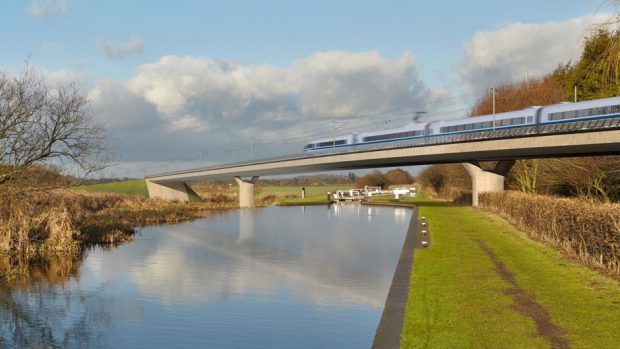I am a fan of trains. Not a trainspotter, you understand, just someone who likes railways.
When I had to travel to Westminster on a regular basis, I always took the train, rather than a plane. Not only was it just as quick by rail from Glasgow or Edinburgh – though admittedly perhaps not from Aberdeen or the Highlands – the train was also more comfortable, without the hassle of security checks, and it was possible to do a bit of work on the way.
So you might think the prospect of high-speed rail links across Britain is something I would support. Well, if the proposed HS2 really achieved true “cross-Britain” high speed rail, I would certainly be in favour. Instead, the plan is for a Y-shaped route from London heading north by Birmingham and splitting into two lines for Manchester and Leeds.
This high-speed rail link was originally costed at £34 billion. By four years ago, that had risen to £55.7 billion. And in September this year, Transport Secretary Grant Shapps revised that figure up yet again to £88 billion. Many experts believe the eventual cost will be way in excess of £100 billion. Not only that. HS2’s first phase – from London to Birmingham – was due to open in 2026. Now it “may” open in 2031, with the second phase to Manchester pushed back seven years to 2040.
Trains 400 metres long, each carrying over a thousand passengers, would shuttle between London and the Midlands – and eventually to Manchester and Leeds – at speeds of up to 250 miles per hour. This would cut half an hour off journey times between the capital and Birmingham, and an hour off journeys to the north of England.
A panel set up by the Government to review the project has completed its report, the full publication of which has been postponed until after next month’s general election. However, a leaked summary earlier this month revealed that the panel will recommend the line’s completion, although the deputy chair of the committee has dissented and plans to prepare his own report.
Would the UK economy benefit from HS2? Well, the Midlands certainly would, and parts of the North of England more marginally. The leaked report claims that the UK economy as a whole would benefit by between £1.30 and £1.50 for every £1 spent. That’s way down on the original forecast of £2.30 for every £1. As far back as 2014 the National Audit Office said that the business case for the line had been over-estimated by the Government by around 86%, and if the costs rise further, as widely expected, we’ll almost certainly be in negative economic return territory.
In addition to the soaring costs, there’s the environmental impact of pushing a new railway line through pristine countryside. There’s been widespread opposition in London too, with swathes of housing cleared to take the line into the city centre at Euston.
And what about Scotland? In 2015 a study said there was no economic case for extending the line north of the border. Instead, it was claimed that under the current proposal, journey times from London to Edinburgh and Glasgow would be cut by half an hour.
But there’s also a serious downside for most of Scotland, and the north-east in particular. An economic impact report prepared for the UK Government by KPMG in 2013 estimated that the UK economy as a whole would benefit to the tune of around £15 billion a year from HS2. However, what the published report did not state were the economic downsides to the project. These were only revealed after a freedom of information request. This section of the report detailed the places around the UK whose economies would be negatively impacted by the completion of HS2.
Top of the list was Aberdeen. The city was expected to lose around £220 million a year from the rail link, the report claimed, as economic activity began to concentrate in Central England. Dundee would lose around £96 million a year and Glasgow £77 million.
It isn’t just Scotland which would feel the impact. It’s estimated the economy of Wales would lose at least £200 million a year, and there would be similar losses in parts of England distant from the new line. Remember too that these are figures from six years ago, and the prospective losses are likely to have increased in the intervening period.
There’s little doubt that Brexit apart, a decision on HS2 will be one of the most pressing issues facing the new Government next month. Over £6 billion has already been spent on the project, with little to show for it other than protests and disruption. The Government will have to decide whether to press ahead with a rail line whose possible economic benefits split the country, or pull the plug, writing off the huge sums already invested. Whatever they do, many people are going to be very unhappy. As for me, next time I go to London, I’ll still be travelling by train – high speed or not.
Campbell Gunn is a retired political editor who served as special adviser to two First Ministers of Scotland











